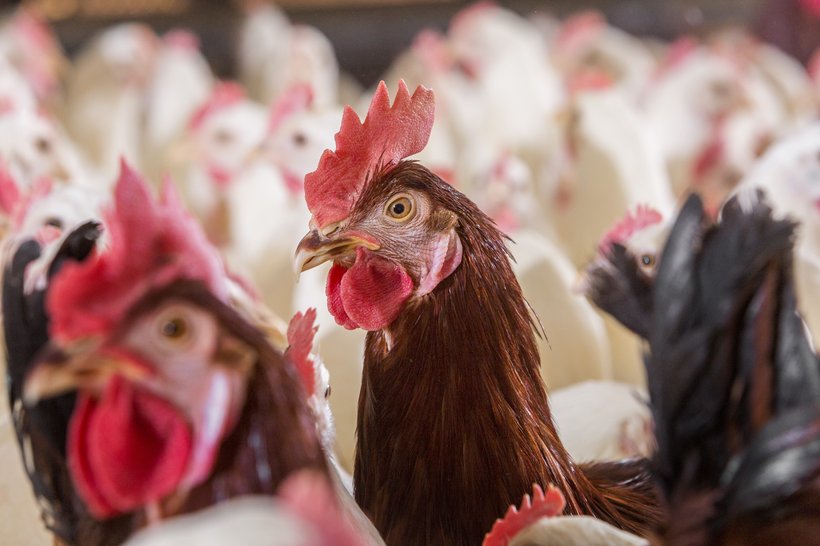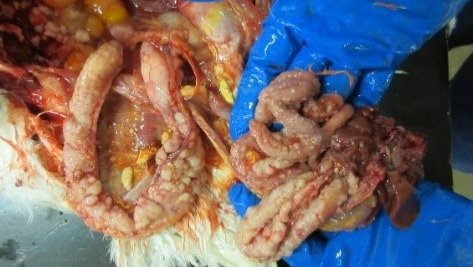
Published on Oct. 19, 2020
Avian Leukosis Virus (ALV) in Laying hens
Avian leukosis virus (ALV) is an oncogenic virus, an infectious disease causing tumors in poultry.
ALV is a retrovirus, an RNA virus and is divided in six subgroups: A, B, C, D, E and J.
Endogenous leukosis viruses are part of the chicken genome and are transmitted genetically. Some can be expressed in an infectious form. Exogenous leukosis viruses are transmitted as infectious virus particles. Exogenous ALV’s are transmitted vertically from hen to progeny through the egg and horizontally from bird to bird by direct or indirect contact. Virus production by albumin-secreting glands of the oviduct causes shedding of ALV into egg albumin and transmission to the embryo.
Congenital or early neonatal infections are most dangerous. Chickens below the age of 4 weeks do not develop immune responses to the virus. They become immunologically tolerant to the virus and develop a persistent viremia in the absence of neutralizing antibodies. Birds with tolerant viremic infections are those most likely to develop neoplasia. Maternal derived antibodies (MDA’s) provide a passive immunity that lasts 3-4 weeks. Chickens infected at older age will produce neutralizing antibodies against ALV and will only be temporary viremic. They seldom develop tumors.
Clinical Signs
Most common forms are lymphoid leucosis (LL) and myeloid leucosis (ML). The clinical signs are not specific. On post-mortem, nodular tumors can be found in internal organs. Normally, tumor mortality is low, 1-2%, but in severe cases tumor mortality can be over 20%. Subclinical infections are described to influence egg production and egg quality.
Diagnosis
The diagnose is difficult. Histopathology, immunohistochemistry or fluorescent antibody tests to detect viral antigen in the tumors are needed to differentiate between Marek’s disease virus (MDV), reticuloendotheliosis virus (REV) and avian leucosis virus.
Because ALV is widespread among chickens, antigen or antibody detection in the effected flocks have limited or no value in diagnosis.

Prevention
Focus must be on the prevention of infection of breeding stock, thus preventing vertical transmission to the day old chicken and consequent horizontal transmission between chickens below the age of four weeks.
At (pedigree) breeding stock level, it is crucial to prevent infections with ALV. Strict biosecurity measures combined with intensive flock -and individual pedigree bird monitoring are key priority.
Tests used are P27 Elisa tests, serum based tissue culture tests and PCR tests on albumin, cloacal swabs, meconium, blood, serum, plasma, embryos and tumors.
References
- Picture affected chicken: Bart Stokvis
